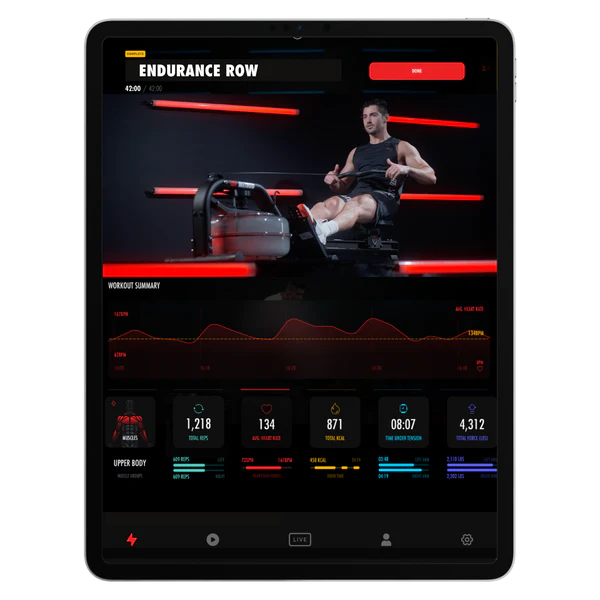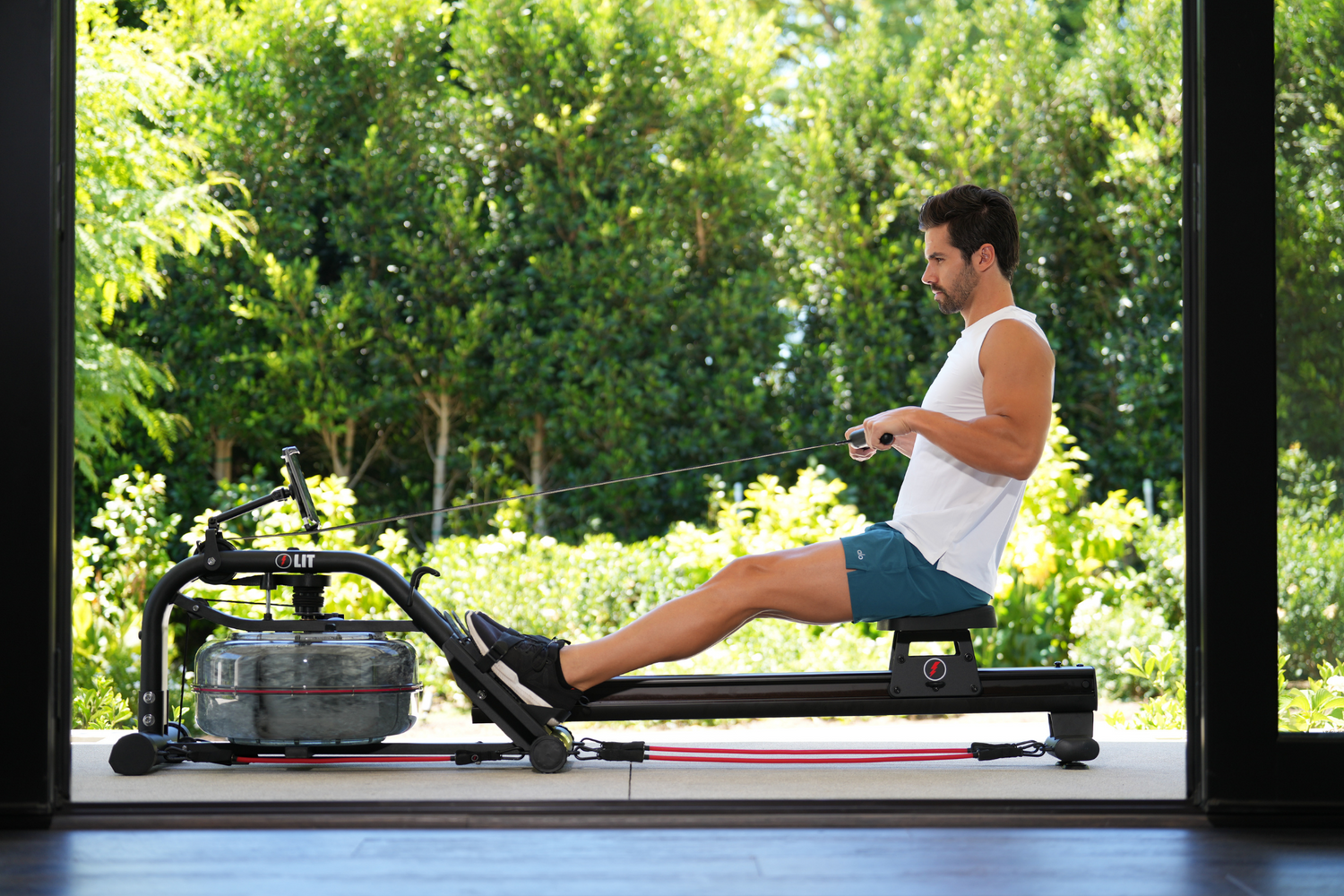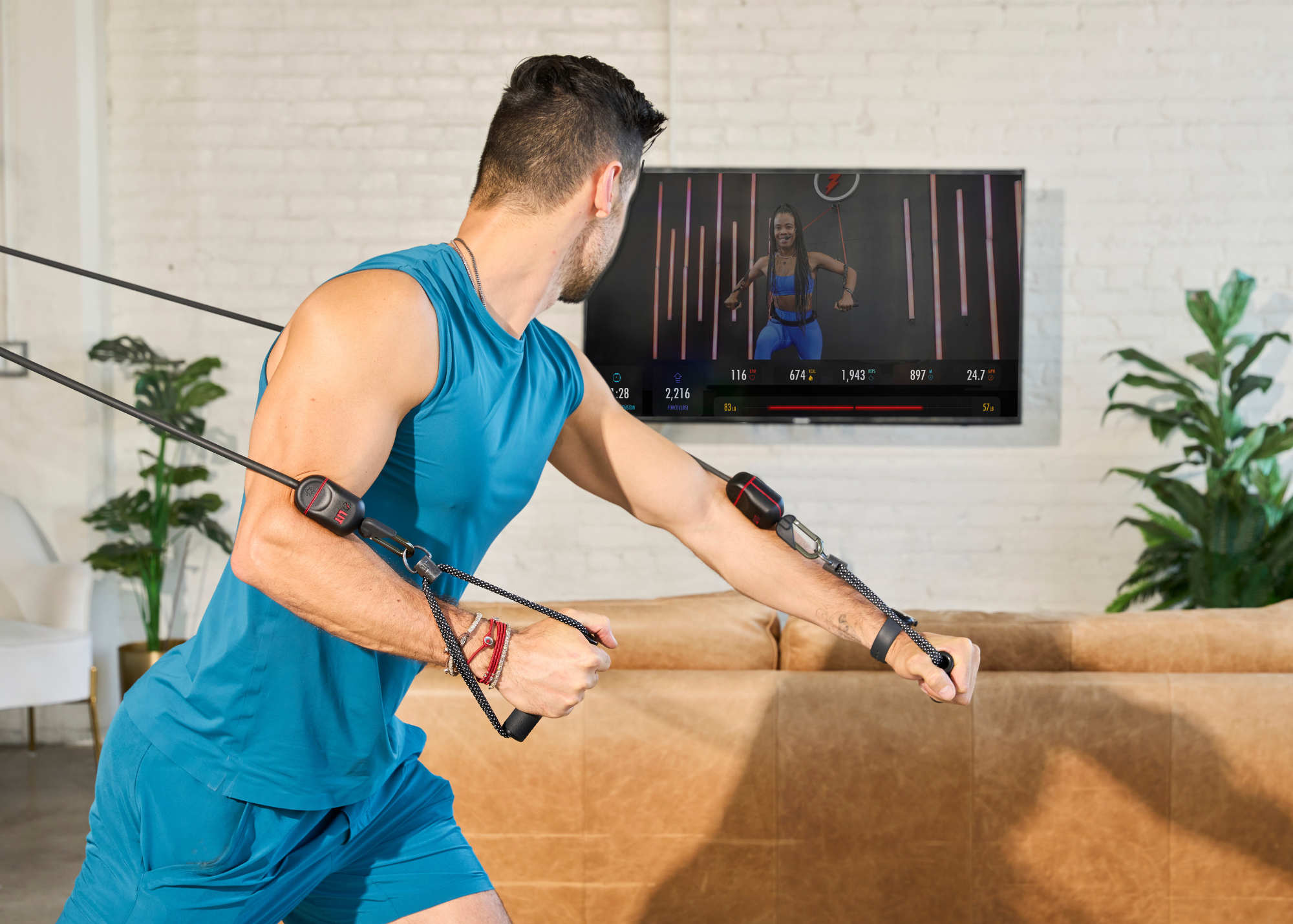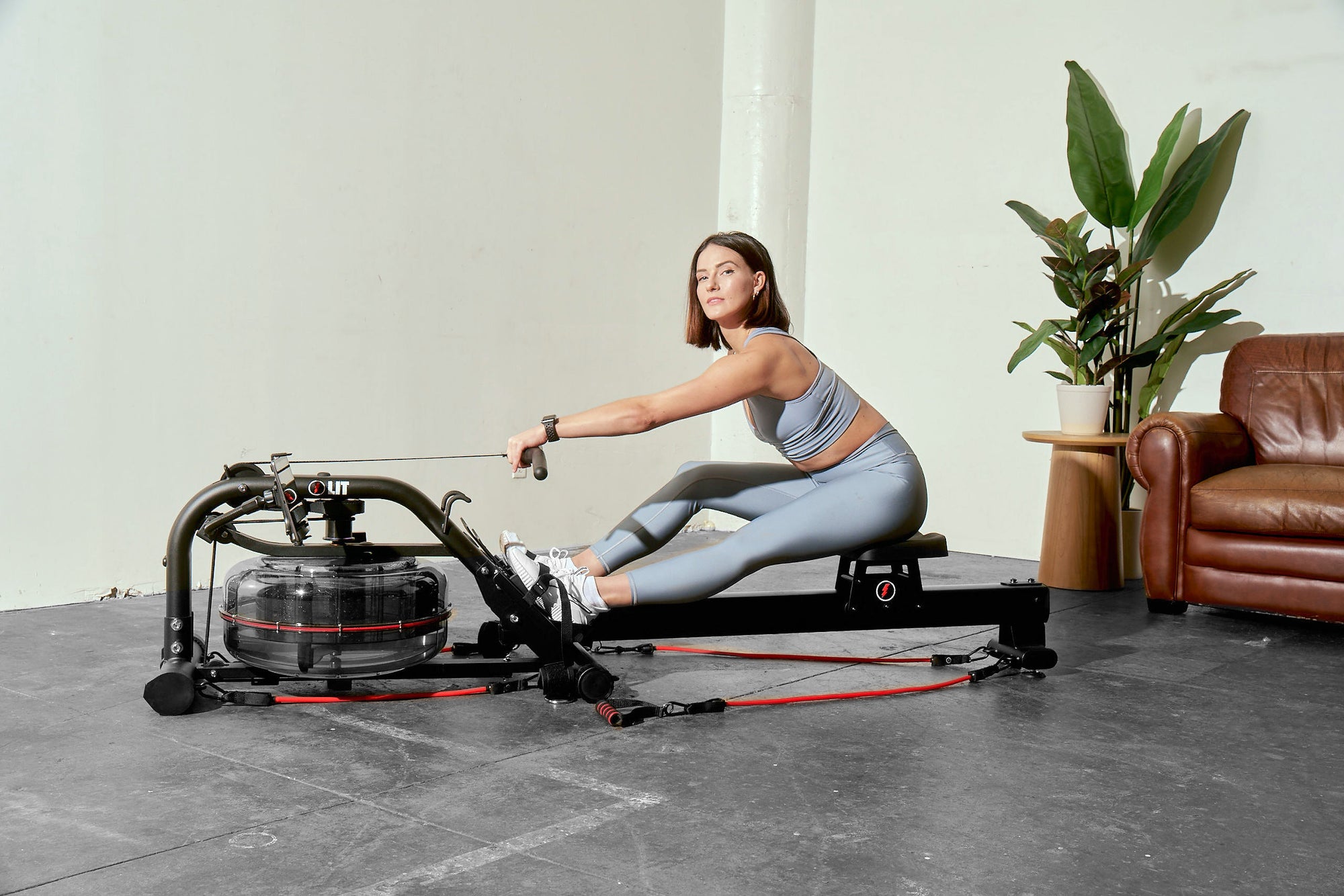Rowing, whether performed indoors using a rowing machine or outdoors with activities such as boating, is considered to be an excellent cardio workout for the entire body. It is also considered a great workout to strengthen your back muscles. But can long-term rowing result in back injuries? LIT’s in-house fitness experts have compiled all the benefits of rowing for your back and ways to prevent back injuries while rowing.
Several factors can contribute to back pain, such as poor posture, prolonged standing, etc. Lifestyle choices like sitting at a desk for long hours, extensive driving, and an uncomfortable bed or chair can also contribute to tension buildup in your back—less active people can also experience back pain. Read on to know how rowing can serve the dual purpose of strengthening your back and preventing back pain.
Trainers and physiotherapists recommend rowing
According to research published by the National Library of Medicine, “rowing is a safe whole-body exercise with aerobic and anaerobic components.” The study further states that a rowing program can benefit body composition and physical fitness.
If you suffer from back pain and are looking for an exercise that can keep you fit even with a bad back, then rowing is an excellent choice. When used correctly, a rowing machine can proactively workout back muscles and help to prevent back pain from occurring. It also eases the tension in the back muscles to relieve pain and discomfort.
However, to truly benefit from rowing, it is crucial to maintain the correct posture and form. Experts suggest focusing on the technique and listening to your body to ensure you are not exerting it over the limit.

Rowing tips for beginners
Beginners can expect to feel mild back strain when they start training on a rowing machine. It’s no different from the pain and soreness you feel in muscles when you exercise for the first time. Back pain can result if you are not using the rowing machine correctly or your body is still adapting to the workout. When pain arises, do not force your body; take a break and let the pain subside. Don’t push too hard until you build the confidence that you follow the proper technique.
4 Benefits of rowing for your back
You don’t need to participate in competitive rowing to reap the benefits; indoor rowing is equally effective.
Rowing machines are great for building upper and lower body strength. Here is a glimpse of some incredible benefits of rowing for your back.
1. Builds a strong butt
Back pain doesn’t always start from up high but usually originates in the hips. the largest muscles in the body. These muscles also support your back. When you work out your glutes, it supports your back better and rowing is an excellent glute exercise. As your hip muscles strengthen, it also improves the strength of your back muscles.
2. Makes the lower back stronger
After the hips, rowing works on your lower back, alleviating back pain. A stronger lower back helps relieve pain and improve overall body posture. LIT Strength Machine is designed to mimic the rowing stroke that targets the lower back.
3. Rowing relieves back stress
Rowing reduces the tension in back muscles by building tension in them when one is working out. It may sound counterintuitive, but the added tension helps relieve the stress. It also helps build muscle tone in the back. The LIT Strength Machine has an elevated seat and extended footplate to alleviate low back pain.

4. Rowing improves endurance
Rowing is a unique combination of cardio and strength that helps build both endurance and power. Rowing builds strength, enabling you to exert maximum force in a concise amount of time. At the same time, it ensures that the body can sustain the activity, building endurance. As a result, you can perform load-bearing tasks more efficiently without injuring your back.
Should you use a rowing machine if you have a bad back?
If you suffer from a bad back, it is essential to consult your physician before you take up any exercise. Existing back pain can get worse if not done with the proper techniques. If your physician advises, then start slow. The LIT Strength Machine has custom programs that focus on injury prevention and mobility to avoid future injuries.
When you have a bad back, stretching correctly before and after a workout is essential. Maintain proper posture when you use the rowing machine. Your back must not be rounded. Keep your chest open to stretch your back and engage your abdominal muscles while pulling the bands. If you do not use the abdominal muscles, or if they are weak, rowing will cause the lower spine to overcompensate, which can cause lower back pain.
Here’s the proper form to do a good back workout on a rowing machine:
-
Begin by forming a “catch” position. You must bend your knees a little, and your arms should reach forward. Maintain a firm grip on the handles.

- Use your legs to push through, engaging the core muscles; while doing so, hinge your torso back slightly.

- Lean your torso at about a 45-degree angle, and with your legs almost fully extended, pull the handle of the rowing machine to the top of your upper abs. Your elbows must be maintained high. This is the “drive” or “glide” position. Hold it for a few seconds before continuing.

- The “return” position requires you to release your arms by gradually straightening them, and your torso will follow. Take back the “catch” position – your knees bend and arms forward.

Can rowing make your back pain worse?
Before you start using a rowing machine, you need to evaluate your physical strength. If you lack physical strength, first try exercises to strengthen your core. Insufficient hamstring flexibility and core strength can put a lot of pressure on your lower back while working out on a rowing machine. It can cause lower back pain or make the pain worse.
When you are inexperienced, To help people with a bad back, we have created LIT Method that combines strength training, cardio, and rehab. We offer expert guidance through our digital platform to ensure you get the rowing workout benefits and even manage the pain with customized workout plans explicitly created for you.
You can access our custom programs highlighting cardio, rehab, strength training, and pilates. We have carefully curated these programs for injury prevention. You can explore the custom LIT workouts here.
6 Tips to protect back while rowing
1. Don’t overtrain
The rule holds for any workout regime and not just rowing. While pushing your body’s limit is how you build strength and muscles, it should always be a calibrated improvement. Overtraining will not build strength; rather, it will exhaust your muscles or cause a back problem.
2. Hamstring flexibility
Your back muscles come under pressure due to tight hamstrings when rowing. When your hamstrings are tight, the flexibility of your hip joints is reduced. Your back compensates by bending more than usual, stressing the muscles and causing back pain. To improve hamstring flexibility, you must practice hamstring stretches. Yoga, skipping, etc., are some ways to improve flexibility. Here are some tips to improve hamstring flexibility.
3. Build core body strength
The muscles in the body work in pairs; when one muscle tightens, the other relaxes. This synchronized and controlled movement is how the human body can function. The lower back muscles work with the abdominals. As rowing engages the lower back, if your core abdominal muscles are not strong enough, the balance and force distribution will be uneven, with lower back muscles working harder. If, after using the rowing machine, you experience lower back tightness, don’t ignore the symptoms. It can develop into a back problem.
4. Mix and match exercises
For rowing, you need general fitness as well. For better results and to avoid back pain, you can combine rowing training with other aerobic exercises like running or cycling. It would help if you had the stamina to use the rowing machine. Aerobic exercises twice a week can help prevent overuse injuries. Also, you can reduce fatigue and loosen your core muscles with mild aerobic exercises.
5. Gradual buildup
Don’t be in a hurry to get results. Gradually increasing the weight is how you will benefit without hurting your back. Rowing machines give you the freedom to control the movement, which is why your focus must be on maintaining posture. Once you are confident that you can keep the proper technique, you can build strength more efficiently. When starting, time on a rowing machine should not even be a consideration. Only correct posture is all you need to focus on.
6. Learn the importance of warm-up
Most people who hurt themselves on a rowing machine are the ones who do not take the warm-up session seriously. Whether you are on a boat or a rowing machine, even a few minutes spent on warm-up exercises and stretches will significantly reduce the risk of injury. Jogging, fast walking, butt kicks, high knees, yoga, etc., are great to get your heart running and pumping blood into muscles. That’s how you get ready to row.

What Makes The LIT Strength Machine The Ideal Rower
Rowing strengthens your back but you want your rower to do much more than just rowing. Introducing the LIT Strength Machine, a step up over traditional rowers.

Here are the salient rowing features of the LIT Strength Machine
- The LIT Strength Machine is the only rowing exercise machine in the market that utilizes 100% of your muscles, not just your back.
- LIT Strength Machine has a dynamic roster of rowing variations that not just maximizes caloric burn but also helps build strength and power in the process. Unlike traditional rowing machines that focus primarily on rowing, LIT Strength Machine is a full-body exercise machine.
~[[lit-strength-machine]]
- You can perform 500+ exercises on the LIT Strength Machine including bicep curls, shoulder raises, presses, pulls, and much more. Check out a glimpse of what our rower can do.

- The LIT Strength Machine has been meticulously designed for all user types. It comes with adjustable water resistance, an elevated seat, and an extended footplate that can help to alleviate lower back pain.

- LIT Strength Machine has been built on low-impact training principles that focus on full-body workouts which deliver results, not injuries. When you purchase the LIT Strength Machine, you get private access to the most extensive repository of beginner, intermediate, and advanced rowing classes with access also to live classes.

- Premium metrics in real time! It doesn’t get better than this. By connecting the LIT Strength Machine with the LIT smart app, you can measure your workout metrics such as distance, speed, calories, reps, and resistance loads in real time and use this data to further improve your rowing workouts.

Check out all the rowing features of the LIT Strength Machine here.
Conclusion
Rowing is an excellent whole-body workout and a great way to strengthen your back muscles.
However, lack of proper technique and poor posture can result in injury or discomfort. Beginners must avoid long training sessions and focus on maintaining correct posture and building core strength. If you are new to rowing machines, ask your trainer to assist you so you can learn how to use the device correctly. Remember, long training sessions can put high pressure on your back.




